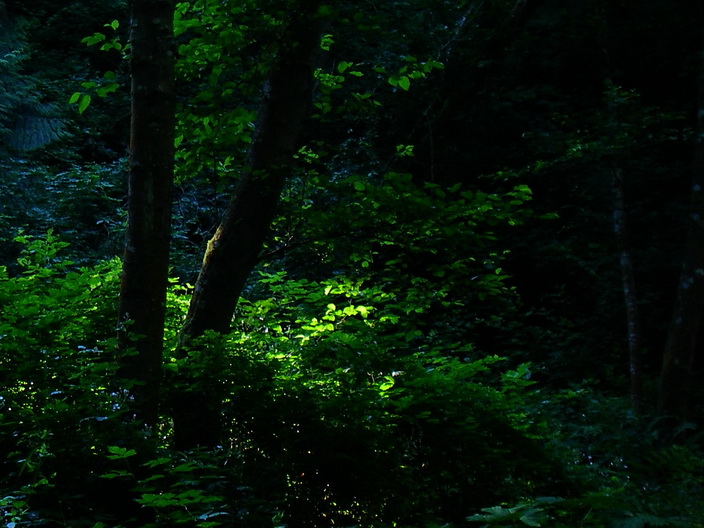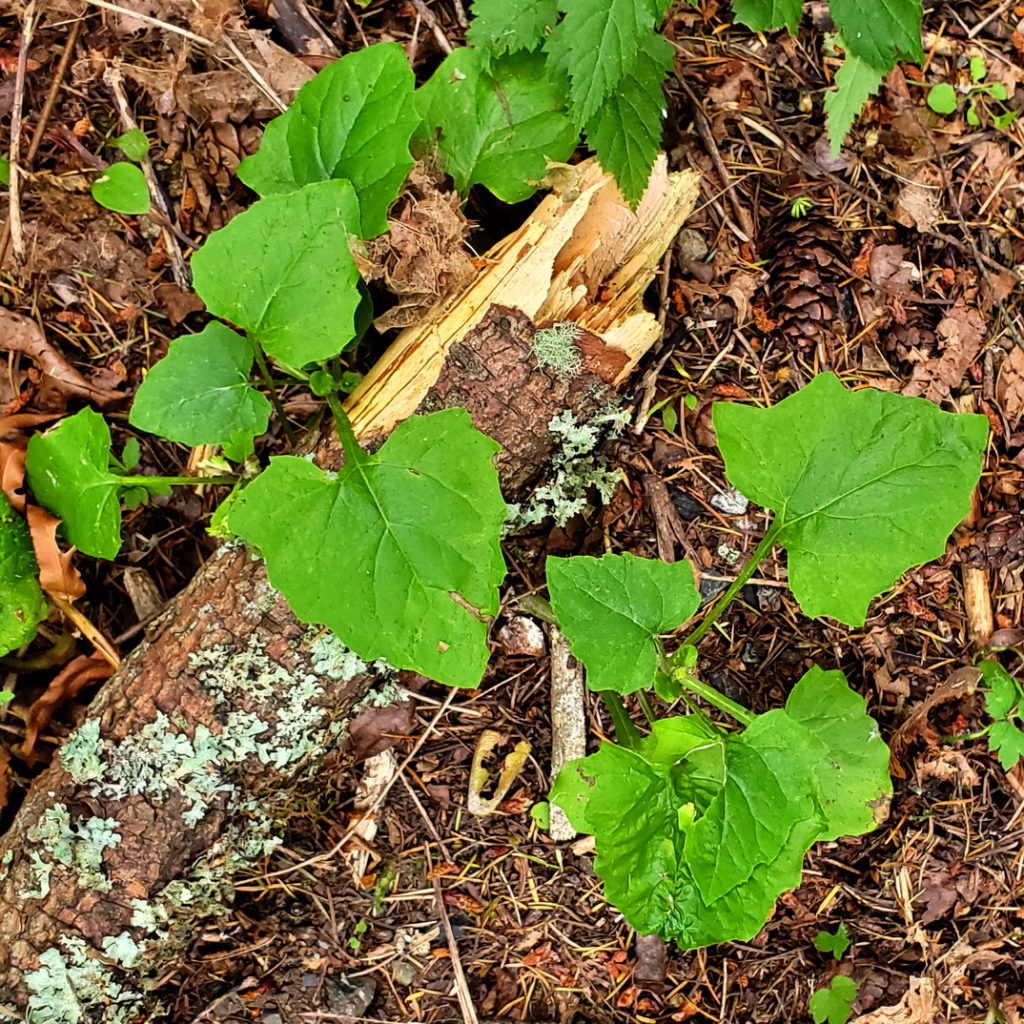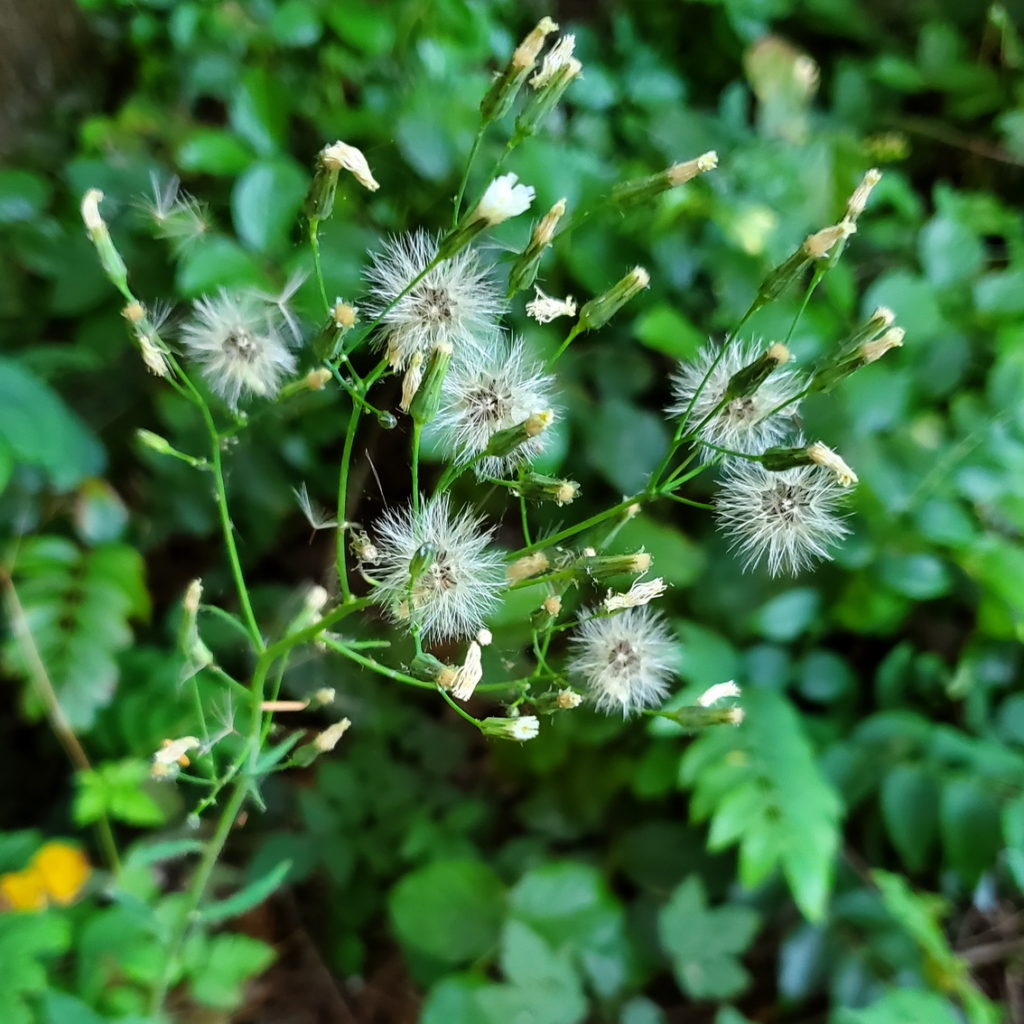Watch for Pathfinder and White-Flowered Hawkweed
If you are ridding your backyard forest of weedy Nipplewort (Lapsana communis) and/or Wall Lettuce (Mycelis muralis), try not to inadvertently remove any indigenous Pathfinder (Adenocaulon bicolor) or White-Flowered Hawkweed (Hieracium albiflorum). All four plants have similar structural appearances, their ranges overlap, and they can all survive on “sunflecks.” To quote Pojar/Mackinnon, “the Pathfinder plant, like several of our forest understory herbs, is a sunfleck species that depends on temporary patches of light for most of its daily carbon gain.”

Telling the Plants Apart
When in bloom, it’s easy to distinguish the yellow-flowered Nipplewort and Wall Lettuce from the White-Flowered Hawkweed and Pathfinder (which also has white flowers). At other times they can be mistaken. All four begin their lives sprouting from seeds and unfurling their two embryonic leaves as they emerge. Next, they put out broad basal leaves that capture as much light as their accidental spots in the world provide. Then, in early summer, triggered by the drying of the soil or some kind of internal mechanisms, they send up single flower stalks that branch into multiple stems with numerous flowers.
Nipplewort, an annual, and Wall Lettuce, a biennial, typically reach 18-30 inches tall when growing under the canopy. The perennial Pathfinder and Wall Lettuce, which usually grow under the canopy, are about the same size. Note that Nipplewort and Well Lettuce actually do best in full sun, and with good conditions can produce thousands of seeds on stalks up to four feet tall. On the other extreme, since Nipplewort tries to bloom before the end of the summer regardless of its size, it sometimes manages only one flower on a stalk less than six inches tall.

Pathfinder
Since its seeds stick to clothes and fur, Pathfinder often first spreads along trails. It takes its Latin species name (bicolor) from the contrasting upper leaf surface (green) and lower leaf surface (white). Its common names (Pathfinder or Trail Plant) refer to the way in which the white under-leaf surfaces become visible when a human or other animal walks through a patch of these plants, leaving a trail that even a novice tracker can follow.

White-Flowered Hawkweed
Compared to the other three, the leaves of the White-Flowered Hawkweed are narrower and covered in fuzz.

Like Nipplewort and Wall Lettuce (but unlike Pathfinder), White-Flowered Hawkweed produces “puffball” seedheads like Dandelions. The Hawkweed’s seedheads may form sooner than the other two, perhaps because it likes sandier soils that dry out earlier in the season.

Helping the Insects
I’ve talked about my efforts to control Nipplewort and Wall Lettuce before (here and here). One might ask if there is any harm in allowing these two plants to take over the niche occupied by Pathfinder and White-Flowered Hawkweed. My response is that there are many species of insects that make use of our indigenous plants, like the Happy Bespeckled Stinkbug that was found smiling goofily on Pathfinder in Oregon.
